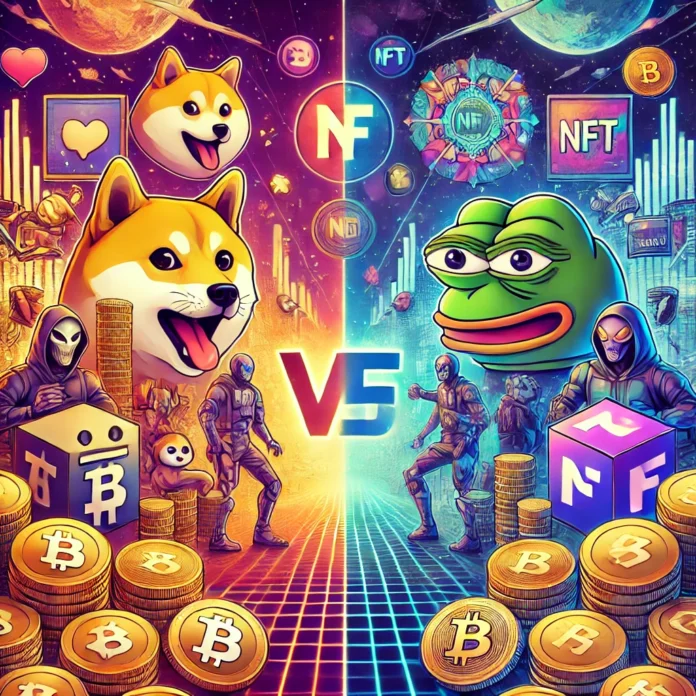In the previous cryptocurrency bullrun, which peaked between 2020 and 2021, NFTs (Non-Fungible Tokens) took center stage. They captured the attention of artists, investors, and mainstream media, making headlines both positive and negative. With the rise of the current bullrun, the question arises whether memecoins will take on the role that NFTs played in the last cycle. At the same time, there is growing concern about how this trend impacts the overall perception of cryptocurrencies.
Parallels Between Memecoins and NFTs
Memecoins like Pepe, Dogecoin, and Shiba Inu are gaining significant traction in the current market cycle. Similar to NFTs in the previous bullrun, they attract investors seeking quick profits and drive massive price swings. The parallels are clear:
- Hype-Driven Demand: Both NFTs and memecoins are heavily reliant on hype, FOMO (Fear of Missing Out), and social media trends. Memecoins leverage viral memes and community support, much like NFTs garnered attention through prominent artists and platforms.
- Accessibility: Entering the memecoin market, much like NFTs, is often straightforward. All it takes is a wallet and some cryptocurrency, lowering the barrier for new investors.
- Speculative Nature: Both trends attract speculative investors hoping for rapid price gains, though investments often lack a fundamental utility.
Do Memecoins Harm the Reputation of Cryptocurrencies?
While NFTs at least provided a cultural and creative outlet by giving artists a new platform and monetization opportunities, the utility of memecoins is often harder to justify. Many argue that memecoins could damage the reputation of the crypto industry for several reasons:
- Lack of Fundamental Value: Memecoins rarely have a tangible use case or innovative technology, leading to criticism that they reduce the crypto market to a “casino.”
- Volatility and Loss Potential: The extreme volatility of memecoins often results in substantial losses for inexperienced investors. These losses harm the industry’s reputation and reinforce negative stereotypes about cryptocurrencies being speculative instruments.
- Fraud and Pump-and-Dump Schemes: Memecoins are highly susceptible to pump-and-dump schemes, where prices are artificially inflated before a sharp sell-off. Such activities attract negative press and erode trust.
- Distraction from Crypto’s True Potential: The crypto industry has the potential to decentralize financial systems, create transparent smart contracts, and develop transformative technologies like DeFi and Web3. Memecoins often distract from these long-term developments.
Why Memecoins Might Succeed Anyway
Despite the criticism, memecoins are an undeniable part of the market. Their popularity demonstrates that cryptocurrencies are no longer confined to a niche audience of technologists and investors but have become a cultural phenomenon. Memecoins serve several purposes:
- Entry Point for Newcomers: For many, memecoins are their first exposure to cryptocurrencies. They appear more accessible and less intimidating than complex blockchain projects.
- Community Building: Memecoins often foster strong and loyal communities that are highly active on social media. These communities help to increase the visibility of crypto.
- Marketing for the Industry: Even if memecoins aren’t taken seriously, they generate headlines and bring cryptocurrencies into mainstream consciousness.
Conclusion
Whether memecoins become the NFTs of this bullrun depends on how long the hype lasts and whether meaningful projects emerge from this sector. What’s clear is that they attract attention from investors and the media, becoming a mass phenomenon. However, their speculative nature and associated risks pose a real threat to the reputation of the broader crypto industry.
The challenge for the crypto world will be to balance entertaining trends like memecoins with the serious development of blockchain technology. Only by doing so can the long-term potential of cryptocurrencies as a transformative force be preserved.





